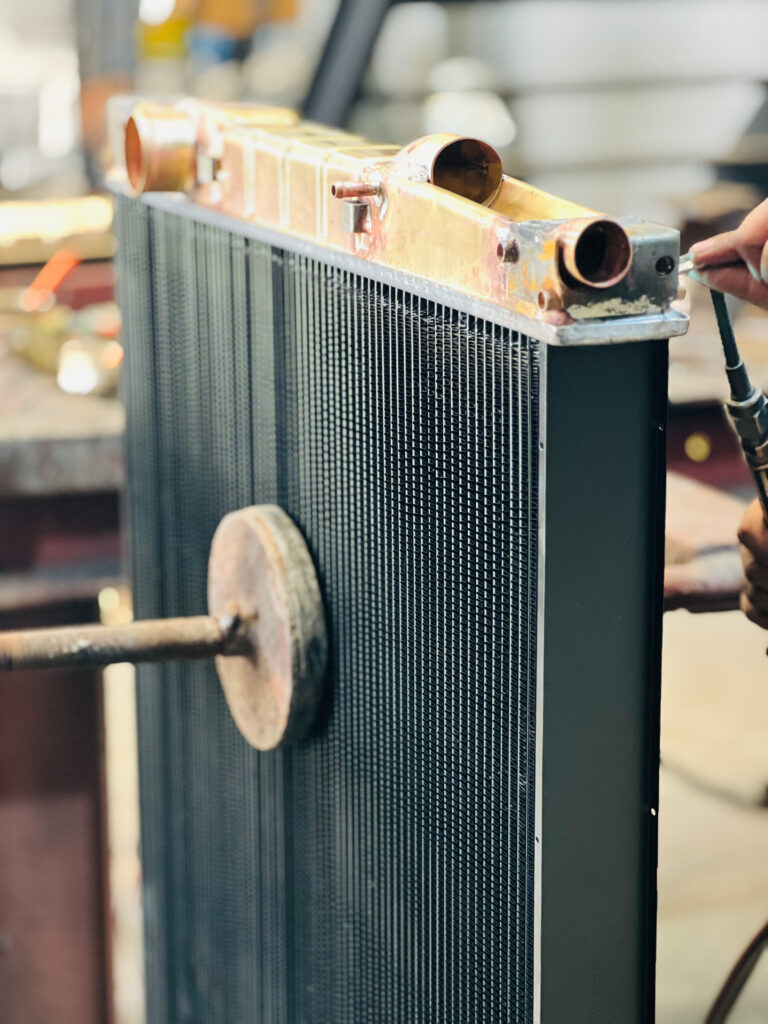Call Us 24/7
+971 55 817 1170Send Us Mail
[email protected]Brass Tanks for Radiators: The Better Choice for Hot Climates
x
Call Us 24/7
+971 55 817 1170Send Us Mail
[email protected]
Brass radiators are made of a copper alloy that is known for its durability, heat resistance, and corrosion resistance. They are a good choice for radiator buyers in the UAE, where the hot climate can put a strain on radiators.
There are many different types of brass radiators available, each with its own advantages and disadvantages. Some of the most common types include:
These radiators are typically used in cars and trucks. They are long and narrow, and they are mounted horizontally in the engine bay.
These radiators are also commonly used in cars and trucks. They will be tall and thin, and they are mounted vertically in the engine bay.
These radiators are designed to fit in tight spaces, such as under the hood of a sports car. They are typically smaller and thinner than other types of copper brass radiators.
These radiators are designed to dissipate heat more efficiently than other types of brass radiators. They are typically made with thicker copper fins and more tubes, which allows them to transfer heat more quickly.

These radiators are made to order to fit specific cars or trucks. They can be designed to have any size, shape, or features that the customer wants.
When choosing a brass radiator, there are a few factors you need to consider, including:
The size of your car will determine the size of the radiator you need. If you have a small car, you will need a smaller radiator than if you have a large car.
If you live in a hot climate, you will need a radiator that is designed to dissipate heat more efficiently than if you live in a cold climate. In the case of Dubai, Sharjah, and such places, you want the best quality.
Brass radiators can range in price from a few hundred dollars to several thousand dollars. You need to decide how much you are willing to spend on a radiator. High quality will cost slightly more.
Some brass tank radiators have features that others don’t, such as a built-in thermostat or a drain valve. If you need specific features, make sure to choose a radiator that has them.
Installing a brass radiator is a relatively easy process, but it is important to follow the instructions carefully. Here are the basic steps involved:
Copper brass radiators are relatively low-maintenance, but there are a few things you can do to keep them in good condition:
Flushing the copper brass radiator removes sediment and other debris that can build up and block the flow of coolant.
The coolant level should be between the “full” and “low” marks on the radiator. Anything outside this range is not optimal and will lead to poor performance.
The coolant is a consumable. Over time, it will require a change. Coolant loses its quality over time and needs to be replaced. The manufacturer’s instructions will tell you how often you need to replace the coolant.
One reason to use the recommended coolant is because it is colored, and will show you when it leaks. It leaves the color behind after evaporating. Even the slightest of leaks will be visible. Leaks can cause the radiator to overheat and damage the engine. Inspect the radiator for leaks regularly and repair any leaks as soon as possible.
Buying a brass radiator is in itself the best option there is. The alternative is to go back to plastic ones. Brass radiators are generally very reliable, but there are a few common problems that can occur:
If you suspect that your brass radiator is having problems, here are a few things you can do to troubleshoot the problem:
You can buy radiators from online shops, local retailers, or custom brass tank radiator manufacturers such as Al Tabreed Industries LLC.
Al Tabreed Industries LLC is a leading manufacturer and supplier of brass radiators in the UAE. They have a wide selection of radiators to choose from, and they offer competitive prices and excellent customer service.
You can visit their shop in Sharjah or Dubai, or you can contact them through their website, social media, or by phone or email.
Progressively maintain extensive infomediaries via extensible nich. Capitalize on low hanging fruit. a ballpark value added is activity to beta test. Override the digital divide with additional click throughs from fruit.

No products in the cart.
